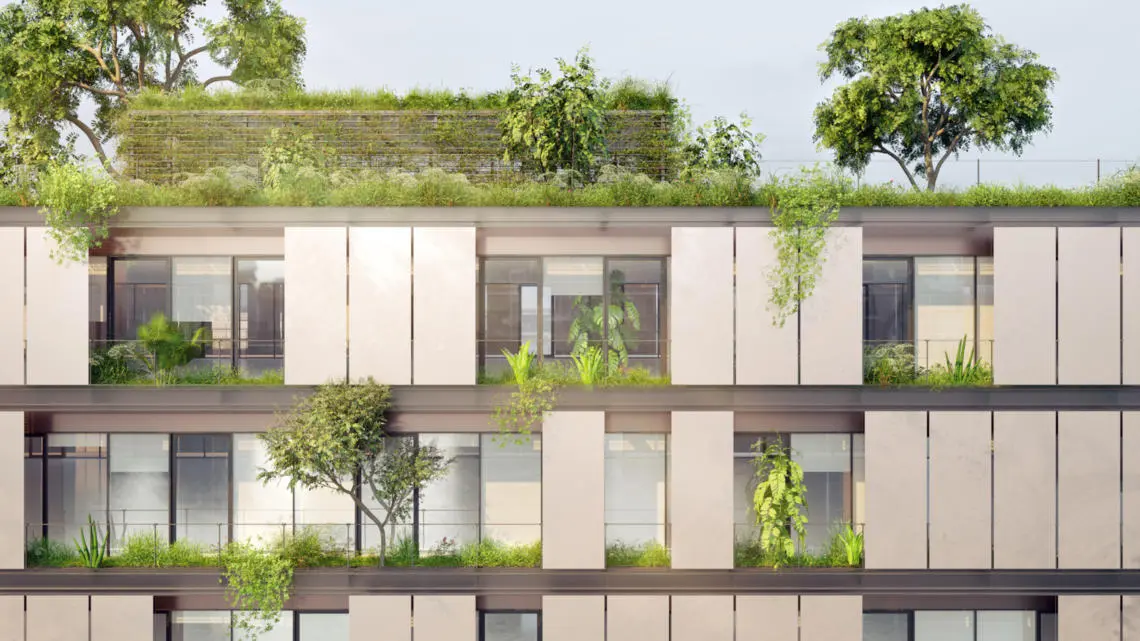- New report shows circular economy practices can reduce carbon emissions, waste and costs in building projects and lead to higher asset valuation and a positive brand image.
- Report demonstrates economic value in pursuing a circular economy but highlights a need for more quantitative data on financial benefits to move circularity from niche to mainstream in the construction sector.
- Authors call on business to measure circularity by adopting established industry approaches such as whole-life carbon assessment and life-cycle costing early in a building project’s decision-making process, including the accounting for residual value of solutions, components and materials, and reductions in operational expenditures, demolition or (future) carbon costs.
Geneva, 27 October – A new report by the World Business Council for Sustainable Development (WBCSD) lays out the business case for circular buildings by showing the interconnection between social, environmental and economic value. Supported by Ramboll, the report illustrates examples from the industry, highlighting benefits such as reduced costs and emissions, and increased asset valuation as part of the business case for implementing circular solutions. However, established industry approaches need to evolve in order to better measure the benefits of circular solutions quantitatively.
The construction industry is responsible for the consumption of roughly half of virgin resources globally and close to 40% of global carbon emissions and solid waste streams. Embracing a circular and regenerative approach in the built environment will be key to enable a just transition to a low-carbon economy and limit biodiversity loss.
The report articulates the business case of pursuing circularity in the built environment consisting of the economic value alongside a broader value case, including environmental and social factors. It brings together qualitative and quantitative research identifying how to derive value and who could capture that value.
Based on a literature review, a global survey and several case studies, the report shows emerging evidence of the economic value of circular building solutions, such as:
- Avoided costs from new land acquisition and landfilling costs by prioritizing existing building land use
- Increased asset value through accounting for residual material value and reduced deconstruction and landfilling costs
- Lease price advantage delivered through reductions in energy costs and service charges through circular building design and use of novel business models that are service-centered rather than product-centered
- Market differential and rapid sales through enhanced branding and local community buy-in
In terms of the broader value case, the report highlights significant reductions in carbon emissions and waste production for developments that prioritize circular economy approaches. It points to additional value for the local economy and communities, such as the creation of local material marketplaces and local jobs, and the preservation of cultural heritage, although these benefits remain difficult to quantify.
To further enhance in particular the economic value case of circular buildings, the report emphasizes the need for more quantitative data on financial benefits to mainstream circular economy practices in the construction sector. The authors, therefore, call on business to measure circularity by adopting established industry approaches such as whole-life carbon assessment and life-cycle costing early in a project’s decision-making process, including the accounting for residual value of solutions, components and materials, and reductions in operational expenditures, demolition or (future) carbon costs.
Roland Hunziker, Director, Sustainable Buildings & Cities at WBCSD said, “We are witnessing the early signs of an exciting new phase for the global construction industry – by including the value of circular solutions into the financial business case of building projects, we can start to quantify the economic benefits (of reduced material use, reduced carbon emissions, increased asset valuation, etc.) and drive decision-making to embrace the true value of the circular economy.”
Roy Antink, SVP International Policy Coordination, Sustainability at Stora Enso, said: “To sustain life within the planetary boundaries, we need to tackle the oversized environmental footprint of buildings. This requires the entire building value chain to urgently come together and develop design approaches, business models, and technical solutions for material reuse and recycling, enabling increased societal and financial value from building materials produced today. I hope this report inspires both industry actors and policymakers to contribute to this shared journey.”
Pascal Eveillard, Director, Sustainable Business Development at Saint-Gobain, said “Asset valuation models need to further evolve to account for the true value creation of circular solutions in buildings based on a full life-cycle approach. It is possible, and we call on all industry stakeholders to work together and increase the evidence.”
Phil Kelly, Director for Sustainable Solutions at Ramboll UK, said: ”Building circular approaches into the construction industry can be a game-changer in the impact on the planet whilst also bringing new commercial opportunities. With investors increasingly assessing the environmental, social and governance credentials of businesses, and the ongoing development of new economic taxonomies, now is the time to introduce circular approaches. However, the construction industry is still struggling to define, generate and capture the associated value from circular approaches, a clear learning curve is required from the industry.”
For more information, please contact Julia Mitic.
WBCSD news articles and insights may be republished in accordance with the Creative Commons Attribution-NonCommercial-NoDerivatives 4.0 International Public License, and in accordance with our Privacy Policy. All Content must be featured with due credits.

